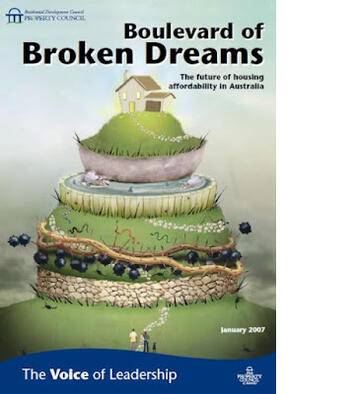
So, there’s yet another inquiry into housing affordability underway. This latest is called “The House of Representatives Standing Committee on Tax and Revenue inquiry into housing affordability and supply in Australia.” Chaired by NSW Liberal MP Mr Jason Falinski, it’s getting a few headlines with statements like ‘half the cost of new house and land packages consist of state and local government charges.’
That’s broadly about right and as a result this latest inquiry is garnering attention in some quarters. The debate will flare up again, as will many of the ill-conceived and doomed-to-fail proposals to address the problem of Australia’s worsening affordability. Academics, planners, bureaucrats, think tanks and industry groups will all pile on – and nothing will change.
There is nothing new in any of this. Indeed, to reflect on how long we’ve known about the problems and done nothing about it, is downright depressing. I was once actively involved with the debate and wrote a detailed report for the Property Council back in 2007 called “Boulevard of Broken Dreams.” I’ve still got a copy on my website here. In it I wrote:
“Australia is now ranked amongst the least affordable nations in the world when it comes to home ownership. While much media and political attention is focused on the role of housing interest rates, these do not explain the very high costs of housing in Australia. The root cause of worsening housing affordability lies squarely at the feet of various public policy settings, identified in this discussion paper. If these policy settings continue on their present path, there is no question that housing costs will continue to spiral beyond reach of many Australians. As this happens, dependency on rental housing will increase. Future generations of Australians will not be able to afford a home of their own, and will increasingly be consigned to rental housing - and rising rental costs. Home ownership will be in the hands of an increasingly elite group of Australians: those wealthy enough to afford a home and those who bought into the housing market before the affordability crisis reached a tipping point. Housing standards will fall - due to price constraints - and new homes will be built on smaller and smaller lots, with cheaper and cheaper materials to stem the tide of ever increasing government and regulatory costs. The signs of a deepening crisis are now evident, and industry groups are united in voicing their concerns that present policy settings will only lead to a worsening problem. Failure to act now will leave future generations of young Australians a dismal legacy of housing stress - in a country which by any other assessment should boast the highest standards of home ownership and affordability.”
Despite Boulevard capturing a wealth of media, industry and political attention at the time – even being debated in Federal Parliament in the lead up to the November 2007 election which saw Kevin Rudd elected as PM – things have gotten progressively worse in the 15 years since. The three remedies called for back then were: to improve development assessment processes, timing, certainty and costs; to ensure adequate supplies of developable land to meet demand; and to fund infrastructure not through up-front per lot levies which impact new housing most, but through infrastructure debt and development bonds. Instead, development assessment processes have become even more mired in asinine regulation, process and uncertainty; land supply has become more constrained in the major centres where the most growth is occurring; and infrastructure levies, costs and charges have escalated even further in the hands of state and local governments, and now also utility companies.
Exacerbating things since 2007 have been record levels of population growth through record high levels of immigration, leading to little or no growth in real wages – a situation which some industry groups are suggesting we should quickly return to after two years of Covid slowed population growth to near zero and saw real wages grow for the first time in many years.
The long term picture of housing affordability since the 1970s has been spectacularly demonstrated in a series of animated graphs in this analysis. Thanks to Demographia author Wendell Cox for giving me the heads up. It’s really very good and highly recommended analysis by a contributor who goes anonymously by the name “Datamentary”.
Read the rest of this piece at The Pulse.
Ross Elliott has more than thirty years’ experience in urban development, property and public policy. In addition to his consulting work he is Chair of the Lord Mayor of Brisbane’s Better Suburbs Initiative, a director of The Suburban Alliance, and District Chair of the ULI in Brisbane, Australia. His past roles have included a number of industry leadership positions. He has written and spoken extensively on a range of public policy issues centering around urban issues, and maintains his interest in public policy through ongoing contributions such as this or via his monthly blog, The Pulse.












